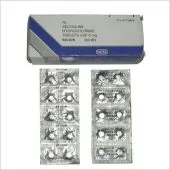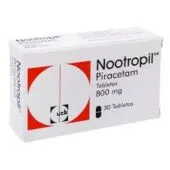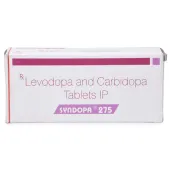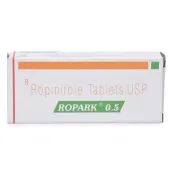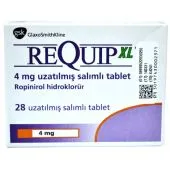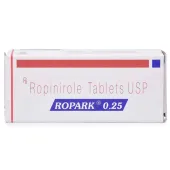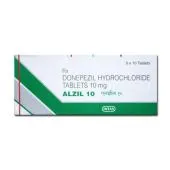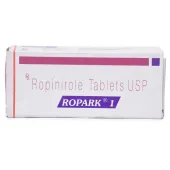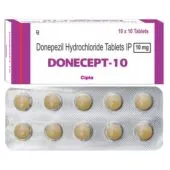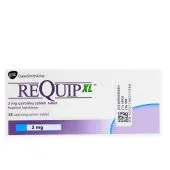Anti Parkinsonian

Antiparkinson
Parkinson's disease (PD) is a neurodegenerative disorder that affects predominantly dopamine-producing (“dopaminergic”) neurons in a specific area of the brain called the substantia nigra. Parkinson's disease mosRead more...
Antiparkinson
Parkinson's disease (PD) is a neurodegenerative disorder that affects predominantly dopamine-producing (“dopaminergic”) neurons in a specific area of the brain called the substantia nigra. Parkinson's disease mostly affects older people but can also occur in younger adults. Parkinson's disease usually begins between the ages of 50 and 65, striking about 1% of the population in that age group; it is slightly more common in men than in women.
Causes of Parkinson's disease
In Parkinson's disease, certain nerve cells (neurons) in the brain gradually break down or die. Many of the symptoms are due to a loss of neurons that produce a chemical messenger in your brain called dopamine. When dopamine levels decrease, it causes abnormal brain activity, leading to signs of Parkinson's disease.
The cause of Parkinson's disease is unknown, but several factors appear to play a role, including:
-
Your genes. Researchers have identified specific genetic mutations that can cause Parkinson's disease, but these are uncommon except in rare cases with many family members affected by Parkinson's disease.
-
However, certain gene variations appear to increase the risk of Parkinson's disease but with a relatively small risk of Parkinson's disease for each of these genetic markers.
-
Environmental triggers. Exposure to certain toxins or environmental factors may increase the risk of later Parkinson's disease, but the risk is relatively small.
Researchers have also noted that many changes occur in the brains of people with Parkinson's disease, although it's not clear why these changes occur. These changes include:
-
The presence of Lewy bodies. Clumps of specific substances within brain cells are microscopic markers of Parkinson's disease. These are called Lewy bodies, and researchers believe these Lewy bodies hold an important clue to the cause of Parkinson's disease.
-
Alpha-synuclein is found within Lewy bodies. Although many substances are found within Lewy bodies, scientists believe an important one is the natural and widespread protein called alpha-synuclein (A-synuclein). It's found in all Lewy bodies in a clumped form that cells can't break down. This is currently an important focus on Parkinson's disease researchers.
Signs of Parkinson's disease
The primary symptoms of Parkinson's disease are all related to voluntary and involuntary motor function and usually start on one side of the body. Symptoms are mild at first and will progress over time. Some individuals are more affected than others are. Studies have shown that by the time that primary symptoms appear, individuals with Parkinson's disease will have lost 60% to 80% or more of the dopamine-producing cells in the brain. Characteristic motor symptoms include the following:
-
Tremors: Trembling in fingers, hands, arms, feet, legs, jaw, or head. Tremors most often occur while the individual is resting, but not while involved in a task. Tremors may worsen when an individual is excited, tired, or stressed.
-
Rigidity: Stiffness of the limbs and trunk, which may increase during movement. Rigidity may produce muscle aches and pain. Loss of fine hand movements can lead to cramped handwriting (micrographia) and may make eating difficult.
-
Bradykinesia: Slowness of voluntary movement. Over time, it may become difficult to initiate movement and to complete movement. Bradykinesia together with stiffness can also affect the facial muscles and result in an expressionless, "mask-like" appearance.
-
Postural instability: Impaired or lost reflexes can make it difficult to adjust posture to maintain balance. Postural instability may lead to falls.
-
Parkinsonian gait: Individuals with more progressive Parkinson's disease develop a distinctive shuffling walk with a stooped position and a diminished or absent arm swing. It may become difficult to start walking and to make turns. Individuals may freeze in mid-stride and appear to fall forward while walking.
Secondary symptoms of Parkinson's disease
While the main symptoms of Parkinson's disease are movement-related, progressive loss of muscle control and continued damage to the brain can lead to secondary symptoms. These vary in severity, and not every individual will experience all of them. Some of the secondary symptoms include:
-
anxiety, insecurity, and stress
-
confusion, memory loss, and dementia (more common in elderly individuals)
-
constipation
-
depression
-
difficulty swallowing and excessive salivation
-
a diminished sense of smell
-
increased sweating
-
male erectile dysfunction
-
skin problems
-
slowed, quieter speech, and monotone voice
-
urinary frequency/urgency
Prevention of Parkinson's disease
There are no fool-proof ways to prevent PD, as its symptoms are not visible for a long time. However, the following measures can be useful to prevent it to an extent.
-
Work with your doctor to create a plan to stay healthy. This might include the following:
-
A referral to a neurologist, a doctor who specializes in the brain
-
Care from an occupational therapist, physical therapist or speech therapist
-
Meeting with a medical social worker to talk about how Parkinson's will affect your life
-
Start a regular exercise program to delay further symptoms.
-
Talk with family and friends who can provide you with the support you need.
Stages of Parkinson's disease
Researchers may disagree on the number of stages of Parkinson’s disease (range from 3-5 stages), however, they all agree that the disease is progressive with symptoms that usually occur in one stage, and may overlap or occur in another stage. The stage increase in number value for all stage naming systems reflect the increasing severity of the disease. The stages used by the Parkinson’s Foundation will be reviewed.
Stage 1: Mild symptoms (tremors and/or movement symptoms like swinging arm while walking) do not interfere with daily activities and occur on one side of the body.
Stage 2: Symptoms worsen with walking problems and both sides of the body are affected.
Stage 3: Main symptoms worsen with loss of balance and slowness of movement.
Stage 4: The severity of symptoms requires help; usually the person cannot live alone.
Stage 5: The caregiver is needed for all activities. The individual may not be able to stand or walk and maybe bedridden and have hallucinations and delusions.
Common Medication
-
Carbidopa-levodopa (Sinemet)
-
Sinemet controlled-release tab
-
Rytary
-
Dopamine agonists (pramipexole, ropinirole, rotigotine patch)
-
Apomorphine
-
MAO-B inhibitors (selegiline, rasagiline)
-
COMT inhibitors (entacapone, tolcapone)
You can buy antiparkinson drugs online from any drug store or online pharmacy. Make sure to only use high-quality drugs from a reliable online drugstore. Failing to do so may result in adverse effects on your body.



